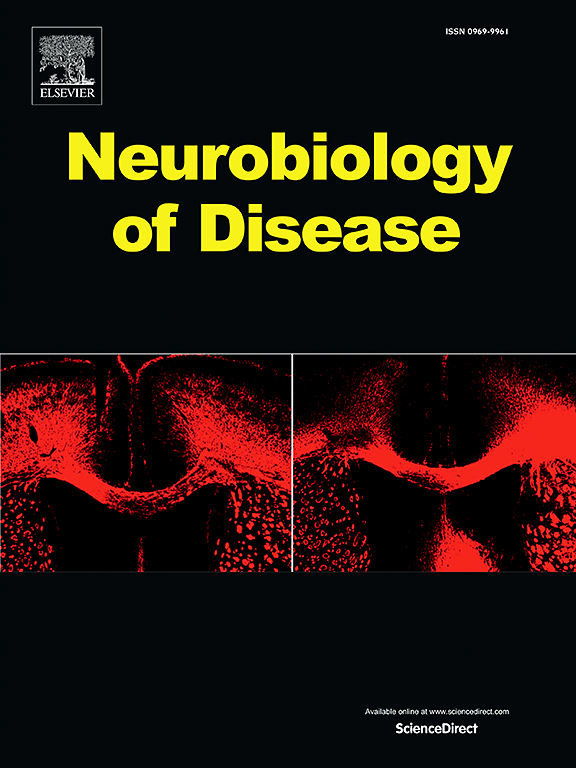脊髓损伤中肿瘤的多组学特征
IF 5.6
2区 医学
Q1 NEUROSCIENCES
引用次数: 0
摘要
脊髓损伤(SCI)引发一系列复杂的继发性损伤过程,主要涉及程序性细胞死亡(PCD)。尽管细胞凋亡和坏死下垂已被广泛描述,但肿瘤在脊髓损伤中的作用仍未充分了解。在这项研究中,我们检测了脊髓损伤后肿瘤相关基因(ORGs)的表达动态和细胞定位。我们对大量RNA-seq数据进行了分析,以确定损伤后五个不同时间点差异表达的ORGs。根据时间表达模式鉴定出6个候选基因(Trp53、Casp3、Jun、Tmem123、Chmp6、Map2)。单细胞RNA测序和空间转录组学揭示了这些基因的特异性细胞类型特异性和以病变为中心的空间富集。Trp53和Casp3在神经元和小胶质细胞中被发现快速上调,而Tmem123则表现出进行性下调。Jun在星形胶质细胞和少突胶质细胞中证实了双相激活。lps处理的PC12细胞的体外实验证实了关键的表达趋势,透射电镜(TEM)证实了肿瘤的形态学特征。在体内,定量反转录PCR (qRT-PCR)和免疫荧光分析在大鼠脊髓损伤模型中进一步证实了这些基因的表达改变。值得注意的是,Map2的降低和Chmp6的升高分别与细胞骨架塌陷和质膜破裂有关。总之,我们的研究结果首次提供了脊髓损伤后肿瘤基因调控的时空图谱,并确定了治疗干预的潜在靶点。本文章由计算机程序翻译,如有差异,请以英文原文为准。
Multi-omics characterization of oncosis in spinal cord injury
Spinal cord injury (SCI) initiates a cascade of complex secondary damage processes, prominently involving programmed cell death (PCD). Although apoptosis and necroptosis have been extensively characterized, the role of oncosis in SCI remains inadequately understood. In this study, we examined the expression dynamics and cellular localization of oncosis-related genes (ORGs) following SCI. We conducted an analysis of bulk RNA-seq data to identify differentially expressed ORGs at five distinct time points post-injury. Six candidate genes (Trp53, Casp3, Jun, Tmem123, Chmp6, Map2) were identified based on their temporal expression patterns. Single-cell RNA sequencing and spatial transcriptomics revealed specific cell-type specificity and lesion-centered spatial enrichment of these genes. Trp53 and Casp3 were found to be rapidly upregulated in neurons and microglia, whereas Tmem123 exhibited a progressive downregulation. Jun emonstrated biphasic activation in astrocytes and oligodendrocytes. In vitro experiments using LPS-treated PC12 cells corroborated key expression trends, with transmission electron microscopy (TEM) confirming the morphological characteristics of oncosis. In vivo, quantitative reverse transcription PCR (qRT-PCR) qRT-PCR and immunofluorescence analyses in a rat SCI model further validated the altered expression of these genes. Significantly, a reduction in Map2 and an elevation in Chmp6 were associated with cytoskeletal collapse and plasma membrane rupture, respectively. Together, our findings provide the first spatiotemporal mapping of oncotic gene regulation following SCI and identify potential targets for therapeutic intervention.
求助全文
通过发布文献求助,成功后即可免费获取论文全文。
去求助
来源期刊

Neurobiology of Disease
医学-神经科学
CiteScore
11.20
自引率
3.30%
发文量
270
审稿时长
76 days
期刊介绍:
Neurobiology of Disease is a major international journal at the interface between basic and clinical neuroscience. The journal provides a forum for the publication of top quality research papers on: molecular and cellular definitions of disease mechanisms, the neural systems and underpinning behavioral disorders, the genetics of inherited neurological and psychiatric diseases, nervous system aging, and findings relevant to the development of new therapies.
 求助内容:
求助内容: 应助结果提醒方式:
应助结果提醒方式:


